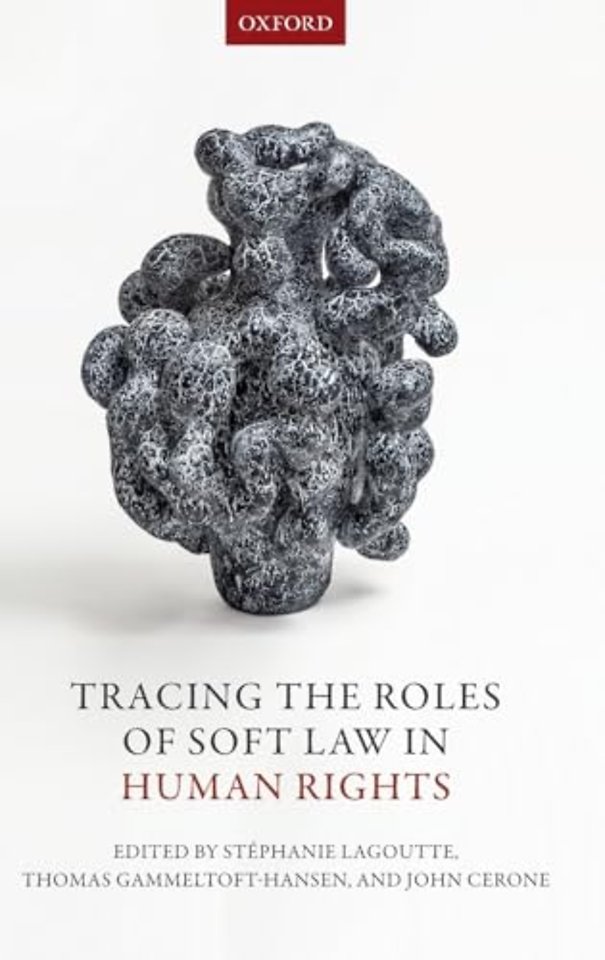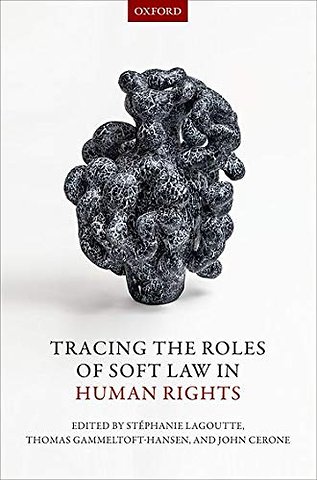



Stéphanie Lagoutte, Senior Researcher, Danish Institute for Human Rights,
Meer over de auteursTracing the Roles of Soft Law in Human Rights
Samenvatting
Soft law increasingly shapes and impacts the content of international law in multiple ways, from being a first step in a norm-making process to providing detailed rules and technical standards required for the interpretation and the implementation of treaties. This is especially true in the area of human rights. While relatively few human rights treaties have been adopted at the UN level in the last two decades, the number of declarations, resolutions, conclusions, and principles has grown significantly. In some areas, soft law has come to fill a void in the absence of treaty law, exerting a degree of normative force exceeding its non-binding character. In others areas, soft law has become a battleground for interpretative struggles to expand and limit human rights protection in the context of existing regimes.
Despite these developments, little attention has been paid to soft law within human rights legal scholarship. Building on a thorough analysis of relevant case studies, this volume systematically explores the roles of soft law in both established and emerging human rights regimes. The book argues that a better understanding of how soft law shapes and affects different branches of international human rights law not only provides a more dynamic picture of the current state of international human rights, but also helps to unsettle and critically question certain political and doctrinal beliefs.
Following introductory chapters that lay out the general conceptual framework, the book is divided in two parts. The first part focuses on cases that examine the role of soft law within human rights regimes where there are established hard law standards, its progressive and regressive effects, and the role that different actors play in the incubation process. The second part focuses on the role of soft law in emerging areas of international law where there is no substantial treaty codification of norms. These chapters examine the relationship between soft and hard law, the role of different actors in formulating new soft law, and the potential for eventual codification.
Contributors:
Mátyás Bódig
Megan Bradley
John Cerone
Anette Faye Jacobsen
Thomas Gammeltoft-Hansen
Felipe Gómez Isa
Christoph Good
Sally Holt
Stephanie Lagoutte
Debra Long
Zdenka Machnyikova
Kasey McCall-Smith
Rachel Murray
Bruce Oswald
John Packer
Angela Sherwood
Peter Vedel Kessing
Léticia Villeneuve
Ekaterina Yahyaoui Krivenko
Specificaties
Over Thomas Gammeltoft-Hansen
Over John Cerone
Inhoudsopgave
1: A taxonomy of soft law, John Cerone
PART 1: Established human rights regimes
2: Interpreting international human rights standards - treaty body general comments as a chisel or hammer?, Kasey McCall-Smith
3: The role and impact of soft law on the emergence of the prohibition of violence against women within the context of the CEDAW, Ekaterina Yahyaoui Krivenko
4: Soft law, doctrinal development and the General Comments of the UN Committee on Economic, Social and Cultural Rights, Mátyás Bódig
5: The role and use of soft law instruments in the African human rights system, Rachel Murray and Debra Long
6: The Copenhagen Process: some reflections concerning soft law, Bruce Oswald
7: The use of soft law in regulating armed conflict: from jus in bello to 'soft law in bello'?, Peter Vedel Kessing
8: Addressing and resolving internal displacement: reflections on a soft law "success story ", Megan Bradley and Angela Sherwood
PART 2: Emerging human rights regimes
9: The role of soft law in the progressive development of indigenous peoples' rights, Felipe Gómez Isa
10: Could the progressive 'hardening' of human rights soft law impair its further expansion? Insights from the UN Declaration of the Rights of Indigenous Peoples, Léticia Villeneuve
11: The UN Guiding Principles on Business and Human Rights - a confusing smart mix of soft and hard international human rights law, Stéphanie Lagoutte
12: Mission creeps: the (unintended) re-enforcement of the actor's discussion in international law through the expansion of soft law instruments in the business and human rights nexus, Christoph Good
13: Soft law within participation rights: tools in development, Anette Faye Jacobsen
14: The role of soft law in minority rights protection and diversity management: reflections from practice, Sally Holt, Zdenka Machnyikova and John Packer
Anderen die dit boek kochten, kochten ook
Net verschenen
Rubrieken
- aanbestedingsrecht
- aansprakelijkheids- en verzekeringsrecht
- accountancy
- algemeen juridisch
- arbeidsrecht
- bank- en effectenrecht
- bestuursrecht
- bouwrecht
- burgerlijk recht en procesrecht
- europees-internationaal recht
- fiscaal recht
- gezondheidsrecht
- insolventierecht
- intellectuele eigendom en ict-recht
- management
- mens en maatschappij
- milieu- en omgevingsrecht
- notarieel recht
- ondernemingsrecht
- pensioenrecht
- personen- en familierecht
- sociale zekerheidsrecht
- staatsrecht
- strafrecht en criminologie
- vastgoed- en huurrecht
- vreemdelingenrecht





